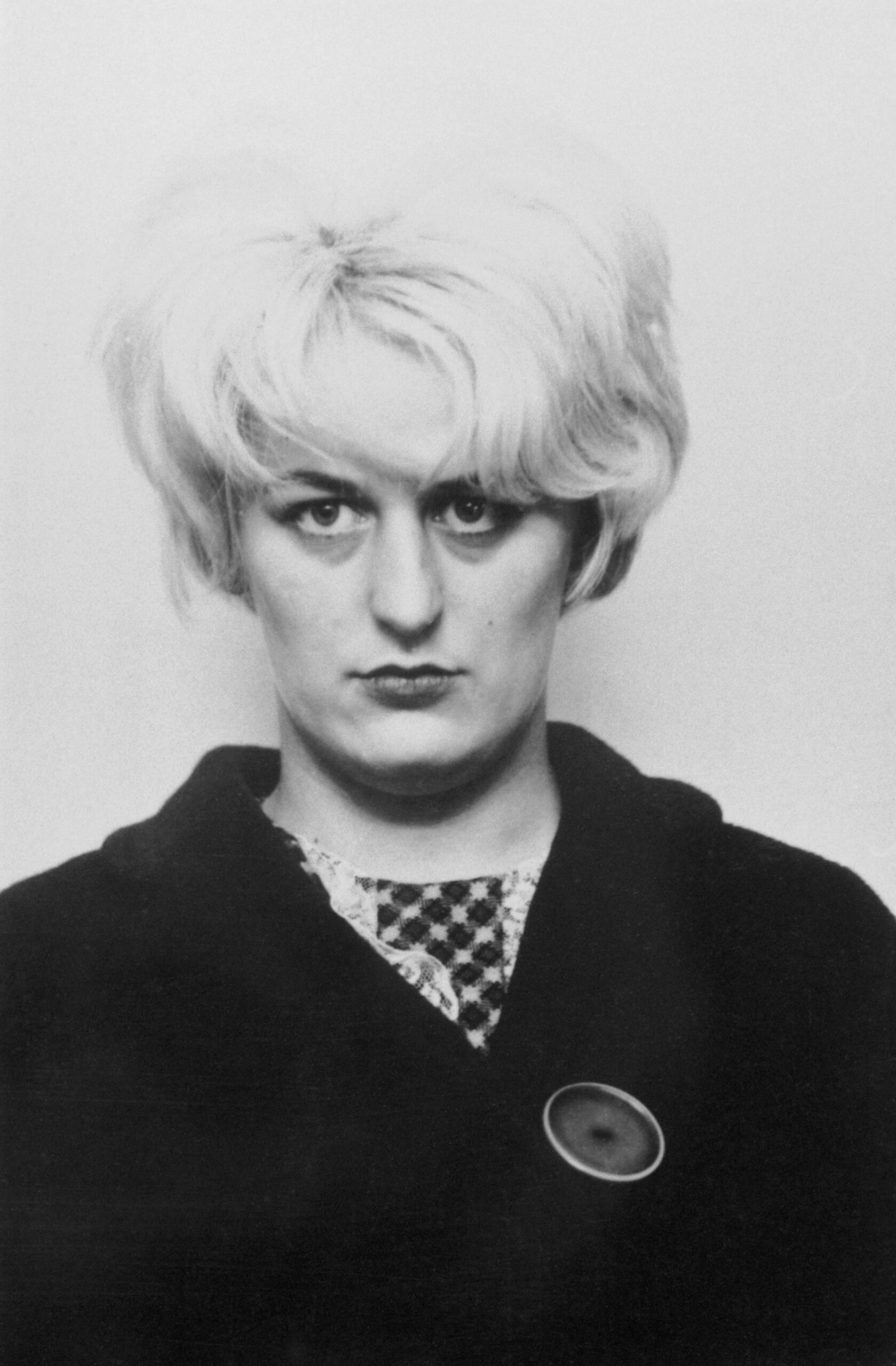Myra Hindley legacy is indelibly stained by her role in the Moors Murders, a series of sadistic killings committed with Ian Brady between 1963 and 1965. She is frequently cited as “the most evil woman in Britain,” and her crimes—those of abduction, assault, and murder of vulnerable children and young people—continue to haunt the national psyche. Hindley’s transition from ordinary Manchester girl to deadly criminal accomplice forms a central thread in criminological studies and true crime narratives alike.
Table of Contents
Early Life and Psychological Profile
Born July 23, 1942, in Manchester, Myra Hindley’s childhood was marked by instability and loss. She grew up largely with her grandmother, seeking emotional refuge from a tumultuous family environment. A tragedy at age 15—the drowning of a close friend—deeply affected her outlook and led her to briefly convert to Roman Catholicism, a quest for meaning and belonging that would later be twisted under Ian Brady’s influence.
Hindley left school early, drifting through jobs before meeting Brady in 1961 at Millwards Merchandising, where he was a newly released ex-convict. Brady’s charisma and dark philosophies enthralled Hindley, forging a dynamic of psychological control and loyalty that soon became lethal.
Meeting Ian Brady: Descent into Darkness
Brady and Hindley’s relationship quickly escalated from lust to shared obsession. Brady’s fascination with power, cruelty, and taboo literature—such as Mein Kampf and the Marquis de Sade—inspired Hindley to abandon previous moral constraints.
She became completely devoted, participating in the planning and execution of crimes under Brady’s manipulation. Investigators and psychologists have since highlighted Hindley’s willingness to suppress empathy and rationalize violence, either out of fear, love, or personal thrill.
The Moors Murders: A Nation in Horror
Between July 1963 and October 1965, Brady and Hindley kidnapped, sexually assaulted, and murdered five young victims:
Pauline Reade (16)
John Kilbride (12)
Keith Bennett (12)
Lesley Ann Downey (10)
Edward Evans (17)
Hindley played a direct role, often luring the children into their car under false pretenses, such as searching for a lost glove. The pair drove victims to remote Saddleworth Moor, where Brady executed brutal acts of violence, sometimes with Hindley’s active involvement.
Many of the victims were sexually assaulted and buried in shallow graves on the moor—a detail that, when unearthed, shocked the nation with its macabre symbolism and the cruelty displayed.
The Turning Point: Capture and Trial
The unraveling began in October 1965 when Hindley’s brother-in-law, David Smith, witnessed Brady killing Edward Evans with an axe. Smith, horrified, reported their actions to the police, triggering a case that quickly expanded into a search for victims and unraveling the pair’s conspiracy.
During the trial in April 1966, Hindley and Brady both pleaded not guilty, but the evidence—photographs, recordings, written notes, detailed witness accounts—was overwhelming. Hindley was found guilty of the murders of Lesley Ann Downey and Edward Evans, and of harboring Brady after John Kilbride’s murder. Both received life sentences under whole life tariffs, meaning Hindley would never be released.
Imprisonment and Confession
Initially, Hindley portrayed herself as an unwilling accomplice, but public and police skepticism persisted. In 1987, facing new evidence and renewed searches for the missing victims, Hindley confessed her full role in all five murders. She cooperated with police in attempts to locate remaining graves, both as an apparent act of remorse and in hopes of gaining parole—a bid that was repeatedly denied.
Despite multiple appeals over her 36 years in prison, the enormity and cruelty of her crimes meant she remained incarcerated until her death on November 16, 2002, aged 60.
Public Reactions and the Media Legacy
Hindley’s image remains inseparable from the iconography of evil. Tabloid headlines, documentaries, and criminological studies present her as emblematic of corrupted femininity and manipulative evil—a woman who violated all cultural expectations of maternal protection to become a murderer.
The public’s visceral response stemmed not only from the brutality of the crimes but also the enduring pain of families, some of whom never saw their loved ones’ bodies recovered (Keith Bennett’s remains, for example, have never been found despite extensive searches and Hindley’s cooperation late in life).
Psychological Analyses and Criminology
Many experts continue to dissect Hindley’s psychology: Was she a victim of Brady’s control, or a willing participant and co-conspirator? Interviews, profiling, and personal correspondence suggest she struggled with guilt, but also rationalized her actions and sought to minimize personal responsibility. The case remains pivotal in studies of female criminality, manipulation, and the psychology of evil.
Enduring Legacy and Cultural Impact
The Moors Murders changed Britain’s perception of criminality, safety, and the capacity for evil. Myra Hindley’s legacy endures in several respects:
Ongoing impact on victims’ families, who advocate for child protection reforms and remembrances
Continuing academic and media analysis of Hindley’s motivations, pathology, and institutional handling
Symbolic warning in popular culture against blind devotion and the corrupting power of manipulative partnerships
FAQs
Who was Myra Hindley?
Myra Hindley was a British serial killer, responsible along with Ian Brady for the Moors Murders of five children between 1963 and 1965.
How did Myra Hindley and Ian Brady meet?
They met in 1961 in Manchester; Hindley was enchanted by Brady’s charisma and intellectual influence, which evolved into a deadly partnership.
Why did the Moors Murders shock Britain?
The crimes involved young victims, sexual abuse, and ritualistic burial on the moors, representing a loss of innocence and the unimaginable evil of a female killer.
How was Hindley captured?
Her brother-in-law, David Smith, witnessed a murder and reported the pair, leading to their arrest and subsequent trial in 1966.
What sentence did Hindley receive?
Hindley received a life sentence and died in prison in 2002 after 36 years of incarceration.
Did Hindley ever admit guilt?
Initially denying involvement, she confessed fully to all five murders in 1987, but remained imprisoned due to the seriousness of her crimes.
Was she ever released?
Despite multiple appeals and claims of reformation, Hindley was never released from prison.
What is the legacy of Myra Hindley?
She remains a symbol of “infanticidal femininity,” a cautionary tale about evil partnership, and a continuing case study for psychology, sociology, and law enforcement.
Conclusion
The story of Myra Hindley is a profoundly disturbing illustration of psychological descent, manipulation, and the capacity for cruelty. Her legacy stands as both a warning and a lesson in vigilance, victim advocacy, and the lasting trauma left by crime and its aftermath. Hindley’s name endures as a touchstone for Britain’s struggle to comprehend the depths of evil—reminding society to mourn, to learn, and never forget











